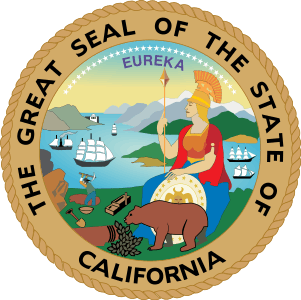California Department of Toxic Substances Control
The California Department of Toxic Substances Control (or DTSC) is an agency of the government of the state of California. The mission of the DTSC is to protect public health and the environment from toxic harm. DTSC is part of the California Environmental Protection Agency (Cal/EPA), has more than one thousand employees, and is headquartered in Sacramento. DTSC also has a number of regional offices across the state including two environmental chemistry laboratories, and field offices in Sacramento, Berkeley, Los Angeles, Chatsworth, Commerce, Cypress, Clovis (Fresno), San Diego and Calexico.
Areas of responsibility
DTSC regulates the generation, handling, treatment and disposal of hazardous waste in California. DTSC also cleans up thousands of hazardous waste sites in California including disposal sites and industrial sites that resulted in contamination of soil and groundwater.
- Programs and laws
In close cooperation with the United States Environmental Protection Agency, DTSC administers both state and federal hazardous waste programs including:
- California Environmental Quality Act—CEQA;
- Resource Conservation and Recovery Act—RCRA
- Comprehensive Environmental Response, Compensation, and Liability Act—CERCLA[1]
- Toxic Substances Control Act—TSCA - of 1976.
- and a number of other State and Federal bodies of law dealing with hazardous materials and the environment.
- Scope
Over the years the scope of activity of the agency has expanded significantly to include the regulation of commercial products including toys, jewelry and even food packaging as it pertains to toxic substances contained within them and the exposure of humans and the environment to these toxic substances.
DTSC protects the public health of communities and the environment from toxic contamination left behind from past industrial and commercial activities through its brownfields and environmental remediation programs under RCRA (Resources Conservation and Recovery Act), CERCLA/Superfund, as well as 8 or 9 other laws governing clean up of contaminated land, water and air.
DTSC protects the public health of communities and the environment from toxic substances in current economic use and hazardous waste being generated by present-day industrial and commercial activities through its permitting and regulatory programs to ensure the safe handling, transport, storage and disposal of toxic substances and waste.
DTSC protects future generations from the long term stewardship of hazardous substances through pollution prevention business assistance programs, and its new green chemistry mandate - to reduce use of toxic substances in everyday products used by California consumers.
Office of Criminal Investigations
Within DTSC's Hazardous Waste Management Program is the Office of Criminal Investigations (or OCI).
Staffing
OCI is staffed with:
- Criminal Investigators (Sworn California State Peace Officers)
- Environmental Scientists
- Computer Forensics Specialists
Criminal Investigators
DTSC Investigators are duly sworn peace officers of the State of California, as established by section 830.3(h) of the California Penal Code.[2] They are authorized to conduct investigations, make arrests, and carry firearms (among other duties).
Training
Investigators must also satisfactorily complete a Regular Basic Police Academy course as prescribed by the California Commission on Peace Officer Standards and Training (POST) and ongoing POST mandated perishable skills training.[3]
Green Chemistry Initiative
DTSC is responsible for implementing California's Green Chemistry Initiative. The Initiative consists of a number of laws seeking to create in California a regulatory market driven environment under which all products will be carefully evaluated so that they are in harmony with public health and the environment. For that purpose, DTSC has created a Green Chemistry Wiki seeking to write regulations pursuant to the Green Chemistry Initiative in real time cooperation with California stakeholders, chemical industry representatives, the people of the State of California and the World.[4]
Exide lead contamination
In 2015, Exide lead contamination raised concerns about longstanding problems at the state Department of Toxic Substances Control. The Governor and state legislators sought new laws, oversight hearings, and other reform efforts after a battery recycling facility east of Los Angeles was allowed to operate without a full permit for more than three decades and the company was not required to set aside adequate funds to clean up pollution coming from the plant.[5]
References
- CERCLA, 42 U.S.C. § 9601–9675.
- "Law section". leginfo.legislature.ca.gov. Retrieved 2019-01-10.
- "What is Coshh - Guide". Monday, March 16, 2020
- Duvall, Mark N.; Carra, Ryan J. & Serie, Timothy M. (March 19, 2016). "Evolving State Green Chemistry Initiatives". The National Law Review. Beveridge & Diamond PC. Retrieved 21 March 2016.
- Barboza, Tony (May 28, 2016). "For public officials, accountability for Exide lead contamination has been scant". Los Angeles Times. Retrieved 2 June 2016.
